Related Research Articles

Flash Gordon is the protagonist of a space adventure comic strip created and originally drawn by Alex Raymond. First published January 7, 1934, the strip was inspired by, and created to compete with, the already established Buck Rogers adventure strip.

Flash Gordon is a 1936 superhero serial film. Presented in 13 chapters, it is the first screen adventure for Flash Gordon, the comic-strip character created by Alex Raymond in 1934. It presents the story of Gordon's visit to the planet Mongo and his encounters with the evil Emperor Ming the Merciless. Buster Crabbe, Jean Rogers, Charles Middleton, Priscilla Lawson and Frank Shannon portray the film's central characters. In 1996, Flash Gordon was selected for preservation in the United States National Film Registry by the Library of Congress as being "culturally, historically, or aesthetically significant".
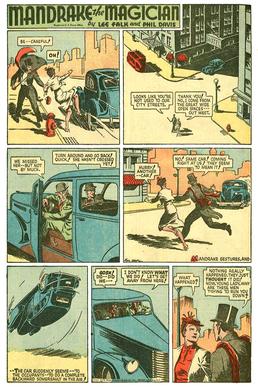
Mandrake the Magician is a syndicated newspaper comic strip, created by Lee Falk before he created The Phantom. Mandrake began publication on June 11, 1934. Phil Davis soon took over as the strip's illustrator, while Falk continued to script. The strip was distributed by King Features Syndicate.
Wilma Deering is a fictional character featured in the various iterations of Buck Rogers which have spanned many media over the years.

Killer Moth is a supervillain appearing in comic books published by DC Comics, usually as an adversary and dedicated original foil personality of Batman. Like Batman, he has no superpowers and relies on his technical equipment, including a Mothmobile and numerous gimmicks. Killer Moth originally wore a garish costume of purple and green striped fabric, with an orange cape and moth-like mask. In Underworld Unleashed, Killer Moth is transformed into the monster Charaxes with superhuman abilities.
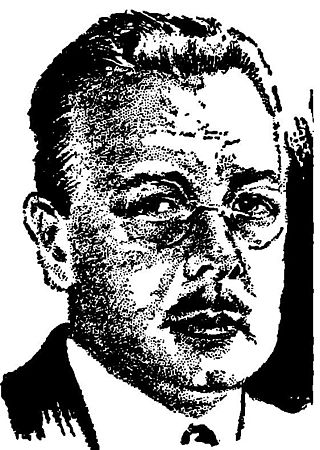
Philip Francis Nowlan was an American science fiction writer, best known as the creator of Buck Rogers.
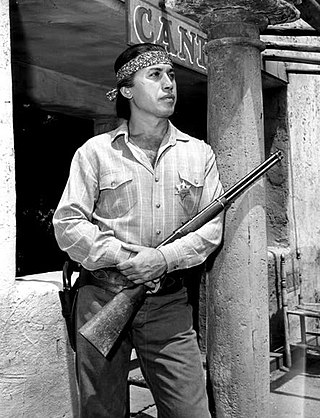
Michael George Ansara was an American actor. He portrayed Cochise in the television series Broken Arrow 1956-1958, Kane in the 1979–1981 series Buck Rogers in the 25th Century, Commander Kang in Star Trek: The Original Series and Star Trek: Deep Space Nine, Deputy U.S. Marshal Sam Buckhart in the NBC series Law of the Plainsman, and provided the voice for Mr. Freeze in the DC Animated Universe. Ansara received a star on the Hollywood Walk of Fame for his work in the television industry, located at 6666 Hollywood Boulevard.

Richard Allen Lupoff was an American science-fiction and mystery author, who also wrote humor, satire, nonfiction and reviews. In addition to his two dozen novels and more than 40 short stories, he also edited science-fantasy anthologies. He was an expert on the writing of Edgar Rice Burroughs, and had an equally strong interest in H. P. Lovecraft. He also co-edited the non-fiction anthology All in Color For a Dime, which has been described as "the very first published volume dedicated to comic book criticism"; as well as its sequel, The Comic-Book Book.
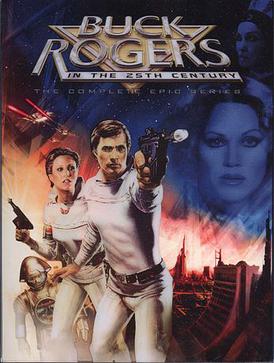
Buck Rogers in the 25th Century is an American science fiction adventure television series produced by Universal Studios. The series ran for two seasons between September 1979 and April 1981 on NBC, and the feature-length pilot episode for the series was released as a theatrical film before the series aired. The film and series were developed by Glen A. Larson and Leslie Stevens, based on the character Buck Rogers created in 1928 by Philip Francis Nowlan that had previously been featured in comic strips, novellas, a serial film, and on television and radio.
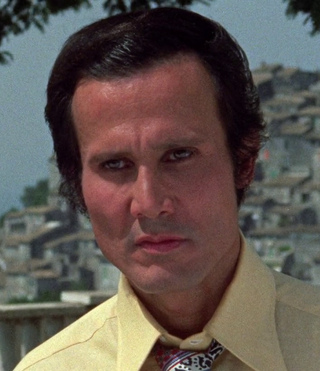
Henry Silva was an American actor. A prolific character actor, Silva was a regular staple of international genre cinema, usually playing criminals or gangsters. His notable film appearances include ones in Ocean's 11 (1960), The Manchurian Candidate (1962), Johnny Cool (1963), Sharky's Machine (1981), and Ghost Dog: The Way of the Samurai (1999).

Doctor Death is a supervillain appearing in publications by DC Comics, primarily as an enemy of Batman. Created by Gardner Fox and Bob Kane, he first appeared in Detective Comics #29. He is notable as the first traditional supervillain to be encountered by Batman as well as his first recurring foe.
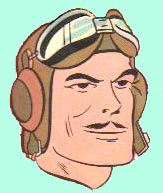
The Adventures of Smilin' Jack is an aviation comic strip that first appeared October 1, 1933, in the Chicago Tribune and ended April 1, 1973.

Big Boy is a fictional gangster in the comic strip Dick Tracy, created by Chester Gould, and was the first featured in a long line of colorful Dick Tracy villains. The character was featured in the 1990 film, paired with Breathless Mahoney.
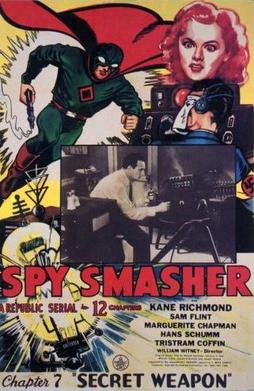
Spy Smasher is a 12-episode 1942 Republic serial film based on the Fawcett Comics character Spy Smasher which is now a part of DC Comics. It was the 25th of the 66 serials produced by Republic. The serial was directed by William Witney with Kane Richmond and Marguerite Chapman as the leads. The serial was Chapman's big break into a career in film and television. Spy Smasher is a very highly regarded serial. In 1966, a television film was made from the serial footage under the title Spy Smasher Returns.
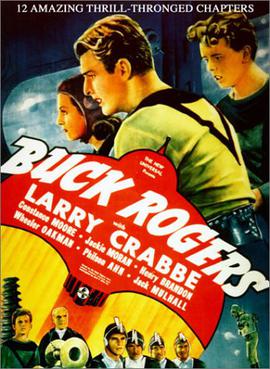
Buck Rogers is a 1939 science fiction film serial, produced by Universal Pictures. It stars Buster Crabbe as the eponymous hero, Constance Moore, Jackie Moran and Anthony Warde. It is based on the Buck Rogers character created by Philip Francis Nowlan, who had appeared in magazines and comic strips since 1928.
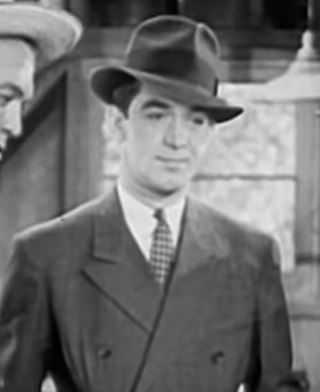
Anthony Warde was an American actor who appeared in over 150 movies from 1937 to 1964.
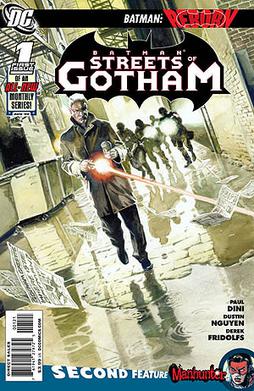
Batman: Streets of Gotham is an American comic book written by Paul Dini, with art by Dustin Nguyen. The series stars Dick Grayson as the new Batman and ties into Grant Morrison's overarching "Batman: Reborn" story and the new Gotham City Sirens monthly. The series ran for 21 issues, from 2009 to 2011.

Buck Rogers in the 25th Century is a 1979 American science fiction adventure film directed by Daniel Haller. Starring Gil Gerard in the title role and Erin Gray as Colonel Wilma Deering, it was produced by Glen A. Larson who co-wrote the screenplay with Leslie Stevens, based on the character Buck Rogers which was created by Philip Francis Nowlan in 1928. It was originally made as a television pilot, but Universal Pictures opted to release the movie theatrically several months before the subsequent television series aired.
Buck Rogers is a science fiction adventure hero and feature comic strip created by Philip Francis Nowlan first appearing in daily U.S. newspapers on January 7, 1929, and subsequently appearing in Sunday newspapers, international newspapers, books and multiple media with adaptations including radio in 1932, a serial film, a television series, and other formats.
References
- ↑ Garyn G. Roberts, "Buck Rogers", in Ray B. Browne and Pat Browne (.ed) The Guide To United States Popular Culture. Bowling Green, OH : Bowling Green State University Popular Press, 2001. ISBN 0879728213 (p.120)
- 1 2 3 4 M. Keith Brooker, Encyclopedia of Comic Books and Graphic Novels.Santa Barbara, Calif. : Greenwood Press, 2010. ISBN 9780313357473 (pp. 551-2)
- 1 2 3 4 Jeff Rovin, The Encyclopedia of Super Villains New York, N.Y. : Facts on File Publications, 1987. ISBN 081601356X (pp. 175-6)
- ↑ DVD Town (Buck Rogers review) Archived 2010-01-12 at the Wayback Machine